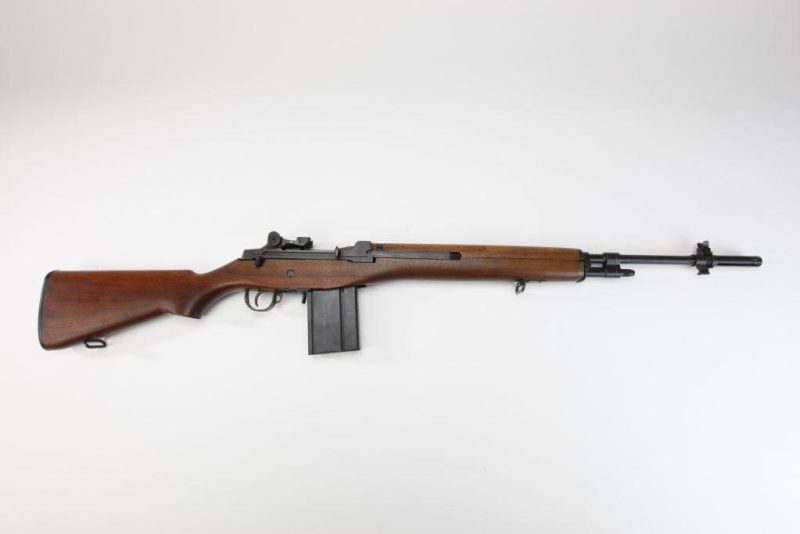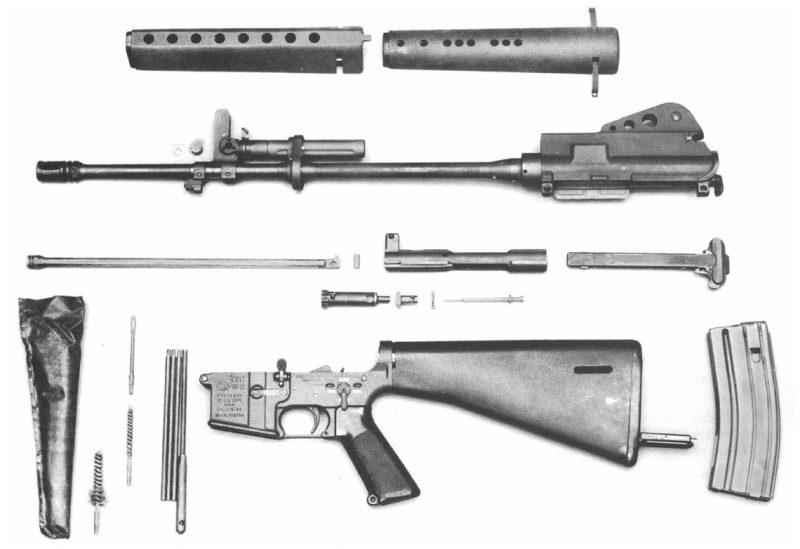The Armalite 15, also known as the AR-15, is a revered and feared rifle for a good reason. This rifle has a long and storied history of development and implementation that stretches back to the 1950s.
The AR-15 is a weapon developed to fit a need, as most innovations are. Hardly any other firearm has struggled to find its place in the market as the AR-15. It was the topic of many a debate until; it eventually found its place.
The Need
The M1 Garand was the rifle of choice during WWII and performed admirably. However, towards the end of WWII, complaints about the M1 Garand circulated, bringing attention to several flaws:
- The .30-06 had inferior stopping power
- The weapon and ammunition had a hefty weight, limiting a soldier’s ammo.
- The M1 could not maintain superior firepower over other modern weapons in prolonged conflicts.

So to fill the expanding role of payload, delivery, efficiency, and lethal capacity of their soldiers, they began to experiment with their favored instrument of divine intervention, the M1 Garand. So the U.S. military began to check out a replacement for the M1 Garand and the M2 Carbine, both weapons using the .30 caliber.
The Dark Horse, the Armalite 10
So, the Springfield Armory hosted a competition according to the standards set forth by the U.S. military.
In 1956, ArmaLite, a new firearm manufacturer, rushed to submit a series of designs designated as AR-10, sporting the 7.62x51mm. Despite the Springfield Armory’s reviews of the AR-10’s performance, the military approved the firearm for production, later known as the M14. The M14 was the M1 Garand retrofitted for the new 7.62 calibers and built with selective fire.

However, the M14 fell short in actual combat. So, ArmaLite, hungry for success, immediately put out a rendition of the AR-10, the AR-15 designed for 5.56mm. While the AR-15 fulfilled all design specifications and found favorable reviews, it was ultimately neglected.
Armalite, frustrated and in financial straits, sold the rights of the AR-15 and AR-10 to Colt.
The Windfall of the AR-15
The United States Army continued testing the AR-15, which found that many shooters achieved higher marksmanship and control over the weapon, mainly due to the 5.56mm rounds. This caliber choice allowed much more range versatility and allowed troops to carry more ammunition into combat.

If you are the owner of an AR-15, you are more than likely already familiar with its infamous accuracy. As far as its versatility, you are only limited by your intended use of the weapon. With the ability to be modded for practically any situation and capable of being fitted with a quality AR-15 sight for any range, the sky’s the limit.
It doesn’t stop there either. With over 50 years in production, the aftermarket upgrades for this weapon are tried and tested and varied. You can take your standard AR-15 and upgrade every part to make a genuinely effective long-range rifle.

Back to the story at hand, in 1961, the USAF, impressed with the rifle’s performance, made an order of 8,500 AR-15s. At the same time, an additional batch of 80,000 AR-15s was requested that summer they were denied acquisition.
This back and forth went on to the degree that the Secretary of Defense Robert McNamara had the Secretary of the Army Cyrus Vance test the M14, the AR-15, and the AK-47. Reportedly, the M14 was found to the superior to all three rifles.
This report didn’t satisfy Secretary McNamara, so he ordered that the testing methods be tested for bias by the Inspector General, who confirmed that the testing methods involved were biased towards the M14.
The following year, Secretary Mcnamara ordered both a halt to the production of the M14 and the adoption of the AR-15. Since Colt had previously redesigned the weapon for mass production, they had set themselves up for success.
The Success of the M16
After a few alterations to the AR-15 design, the firearm was produced in two variants, the M16 and the M16A1. In 1963 Secretary McNamara ordered 85,000 M16A1’s for use by the Armed Forces.

Shortly after this, Colt began to manufacture the semi-automatic AR-15 rifle for civilians and law enforcement that we are so familiar with today. Now established in production for the U.S. armed forces, law enforcement, and civilians, the AR-15 platform was here to stay.
Today, the AR-15 is the most trusted and utilized rifle found in the Armed Forces and Law Enforcement alike, and current advances in firearm technology continue to improve its performance.









Your article mentions multiple times that the AR15 is .556 caliber. This is INCORRECT. It is .223 caliber or 5.56 MM. A .556 caliber would be larger than a 50 caliber machine gun
“The M1 Garand was the rifle of choice during WWI and WWII,”
WW 1??? The M-1 was designed in 1928 and went into production in 1934.
Thanks for the great blog post. Are these public domain images by chance? Trying to locate for a project I am working on. Thanks!!
From what I read, at the beginning of the Viet Nam war, the US had M14’s but supplied M16’s to the South Vietnamese troops. This was because they figured the smaller statue of the South Vietnamese troops would be more appropriate for them to carry the much lighter M16 plus lighter ammo. The US troops became familiar with the M16 and preferred it to their M16s, especially for jungle warfare. Also the M16 was controllable in the automatic mode.
The rest is history!
One interesting fact about the introduction of the M-16 rifle during the Vietnam War is related to its initial reception and performance issues. When the M-16 was first issued to U.S. troops in Vietnam in the mid-1960s, it was praised for its light weight, ease of use, and firepower. However, it soon encountered serious reliability problems in the harsh jungle conditions of Vietnam.
The rifle was initially distributed without cleaning kits or adequate instruction on maintenance, and it was falsely advertised as being “self-cleaning.” This led to malfunctions and jams in combat situations, primarily due to the fouling caused by the gunpowder used in the ammunition. The problems were so severe that some soldiers reportedly abandoned their M-16s in favor of captured enemy weapons, which were more reliable under those conditions.
These issues led to a congressional investigation and significant changes in both the rifle’s design and its ammunition. The problems were eventually rectified with improved maintenance training, the distribution of cleaning kits, and the switch to a different gunpowder in the ammunition, which greatly increased the M-16’s reliability and solidified its place as a standard infantry weapon for the U.S. military.
The author correctly uses 5.56mm is hotter than .223 cal but the same bullet diameter. you can fire both in ARs, but you cannot fire 5.56mm in a .223 without damage. my AR is clearly marked 5.56mm
I stopped reading when you mentioned that one of the complaints about the 30/06 was that it lacked stopping power.